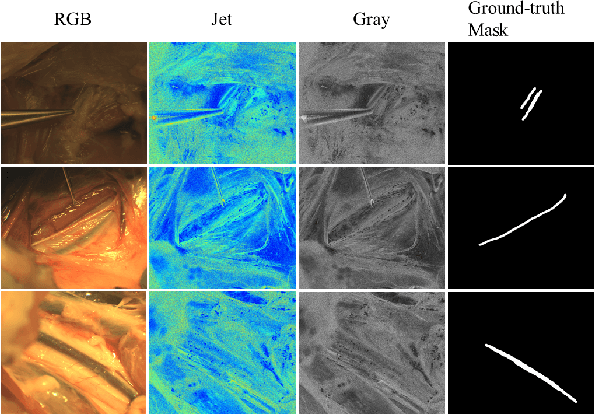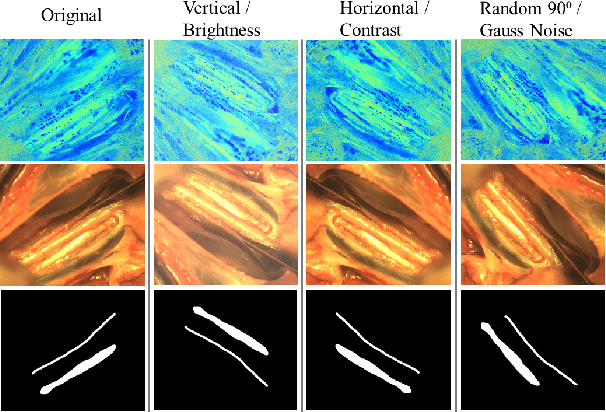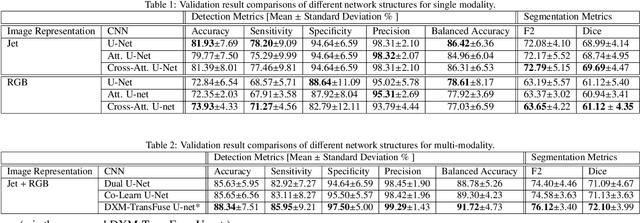Bo Ning
DXM-TransFuse U-net: Dual Cross-Modal Transformer Fusion U-net for Automated Nerve Identification
Feb 27, 2022



Abstract:Accurate nerve identification is critical during surgical procedures for preventing any damages to nerve tissues. Nerve injuries can lead to long-term detrimental effects for patients as well as financial overburdens. In this study, we develop a deep-learning network framework using the U-Net architecture with a Transformer block based fusion module at the bottleneck to identify nerve tissues from a multi-modal optical imaging system. By leveraging and extracting the feature maps of each modality independently and using each modalities information for cross-modal interactions, we aim to provide a solution that would further increase the effectiveness of the imaging systems for enabling the noninvasive intraoperative nerve identification.
Spike and slab Bayesian sparse principal component analysis
Jan 30, 2021



Abstract:Sparse principal component analysis (PCA) is a popular tool for dimensional reduction of high-dimensional data. Despite its massive popularity, there is still a lack of theoretically justifiable Bayesian sparse PCA that is computationally scalable. A major challenge is choosing a suitable prior for the loadings matrix, as principal components are mutually orthogonal. We propose a spike and slab prior that meets this orthogonality constraint and show that the posterior enjoys both theoretical and computational advantages. Two computational algorithms, the PX-CAVI and the PX-EM algorithms, are developed. Both algorithms use parameter expansion to deal with the orthogonality constraint and to accelerate their convergence speeds. We found that the PX-CAVI algorithm has superior empirical performance than the PX-EM algorithm and two other penalty methods for sparse PCA. The PX-CAVI algorithm is then applied to study a lung cancer gene expression dataset. $\mathsf{R}$ package $\mathsf{VBsparsePCA}$ with an implementation of the algorithm is available on The Comprehensive R Archive Network.
 Add to Chrome
Add to Chrome Add to Firefox
Add to Firefox Add to Edge
Add to Edge